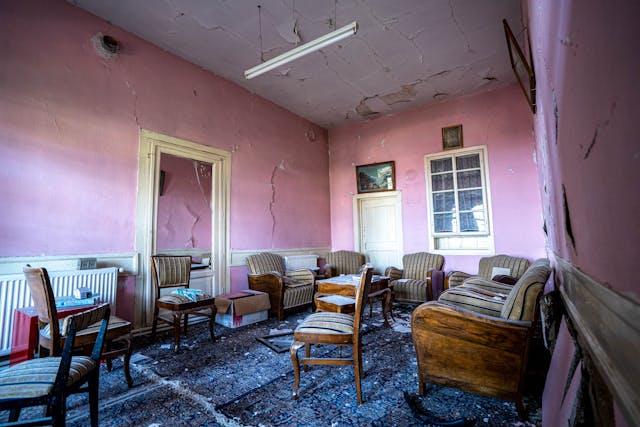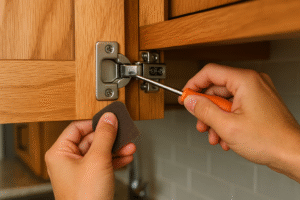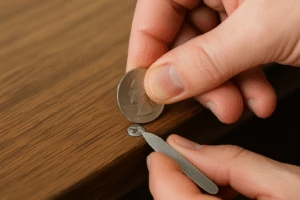Introduction: Dangerous Ceiling Cracks – Recognizing and Addressing the Risks
Ceiling cracks can be an unsettling sight, especially when they signal deeper structural issues. While minor cracks are often harmless, dangerous ceiling cracks pose significant risks to your home and personal safety. These cracks may indicate underlying structural problems, such as foundation shifts, moisture damage, or even truss uplift. Knowing how to identify and address these cracks is crucial for homeowners and property managers.
From the subtle long hairline crack in ceiling to a more severe bowed ceiling crack, understanding the type of crack and its cause is the first step toward ensuring a safe and secure home. Certain cracks, such as a crack where wall meets ceiling, might appear harmless at first but can escalate into more serious issues if left unaddressed.
In this guide, we’ll dive into the types, causes, and solutions for dangerous ceiling cracks, helping you make informed decisions about repairs and prevention. Whether it’s a crack across ceiling or a foundation ceiling crack, addressing these problems promptly can save you from costly repairs and potential hazards.
Identifying Types of Dangerous Ceiling Cracks
Not all ceiling cracks are created equal. Understanding the differences can help you determine whether a crack is purely cosmetic or an indicator of a deeper issue. For instance, a straight crack in ceiling may result from natural settling, while a garage ceiling drywall cracking at seams might point to structural damage.
Causes of Dangerous Ceiling Cracks
Several factors can lead to ceiling cracks. Poor construction practices, temperature fluctuations, and water damage are common culprits. A truss uplift crack, for instance, occurs when seasonal changes cause wooden trusses to shift, while a crack appeared in ceiling after heavy rain might indicate water infiltration.
Signs That a Ceiling Crack is Dangerous
How can you tell if a crack is more than just a cosmetic issue? Look for warning signs such as widening cracks, sagging ceilings, or cracks accompanied by water stains. A long crack in ceiling that grows over time often points to structural instability.
How Dangerous Ceiling Cracks Affect Your Home
Dangerous ceiling cracks not only compromise the structural integrity of your home but also decrease its value. For example, a prominent crack in bedroom ceiling can deter potential buyers. Additionally, cracks may allow moisture to seep in, leading to mold growth and further damage.
DIY Repairs for Minor Ceiling Cracks
For minor cracks like a long hairline crack in ceiling, DIY solutions can be effective. Use a quality filler or patching compound to repair the crack. However, for more severe issues such as a foundation ceiling crack, professional intervention is recommended.
When to Call a Professional for Dangerous Ceiling Cracks
Not all ceiling cracks can be fixed with a simple DIY approach. If you notice a bowed ceiling crack or a crack across ceiling that worsens over time, it’s time to call a structural engineer or contractor. Professionals can assess the damage and provide tailored solutions.
Preventing Dangerous Ceiling Cracks
Prevention is always better than cure. Regular home maintenance, such as fixing leaks promptly and ensuring proper ventilation, can prevent dangerous ceiling cracks. Additionally, reinforcing areas prone to stress, like where the wall meets the ceiling, can minimize cracking.
Costs of Repairing Dangerous Ceiling Cracks
Repair costs vary depending on the severity and cause of the cracks. For example, fixing a minor straight ceiling crack might cost under $100, while addressing a garage ceiling drywall cracking at seams caused by structural damage could cost thousands.
Structural Risks of Ignoring Dangerous Ceiling Cracks
Ignoring dangerous ceiling cracks can lead to catastrophic consequences. A seemingly small crack appeared in ceiling can grow into a major issue, compromising the stability of your home and posing safety risks to its occupants.
Conclusion: Dangerous Ceiling Cracks – Take Action Now
Addressing dangerous ceiling cracks promptly is essential for maintaining your home’s safety and value. By identifying the type of crack and understanding its cause, you can take the necessary steps to repair it.
From minor issues like a straight crack in ceiling to severe cases such as a foundation ceiling crack, each type of crack requires a specific approach. Whether you opt for a DIY repair or hire a professional, timely action is crucial to prevent further damage.
Regular maintenance, professional inspections, and swift action can make all the difference in keeping your home safe and structurally sound. Remember, a proactive approach to dangerous ceiling cracks not only saves money in the long run but also ensures peace of mind for you and your family.

Share this:
- Click to share on Facebook (Opens in new window) Facebook
- Click to share on X (Opens in new window) X
- Click to share on LinkedIn (Opens in new window) LinkedIn
- Click to share on Reddit (Opens in new window) Reddit
- Click to share on X (Opens in new window) X
- Click to share on Threads (Opens in new window) Threads
- Click to share on WhatsApp (Opens in new window) WhatsApp




